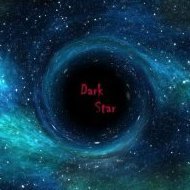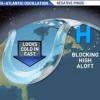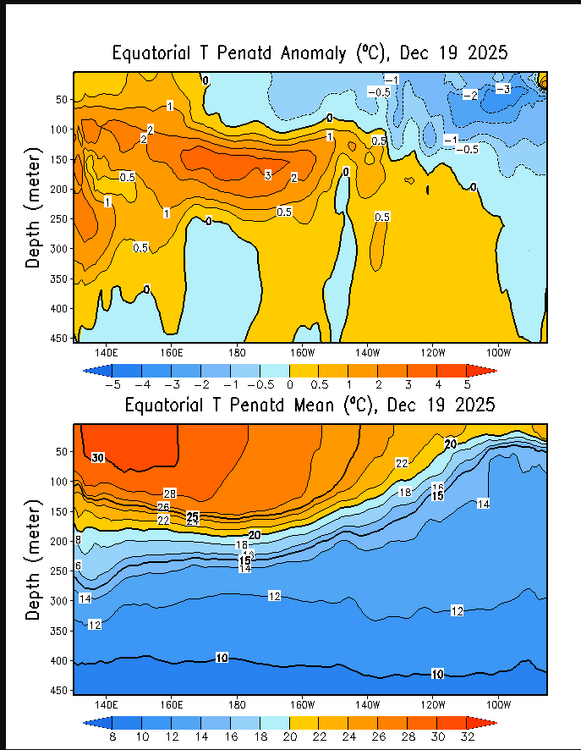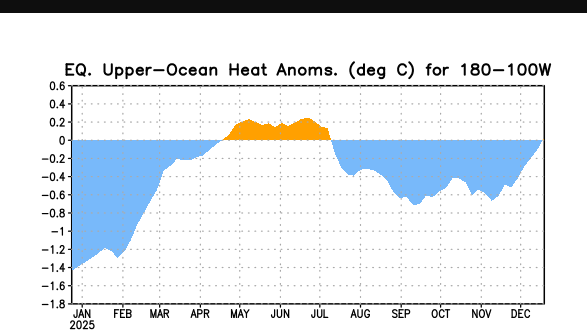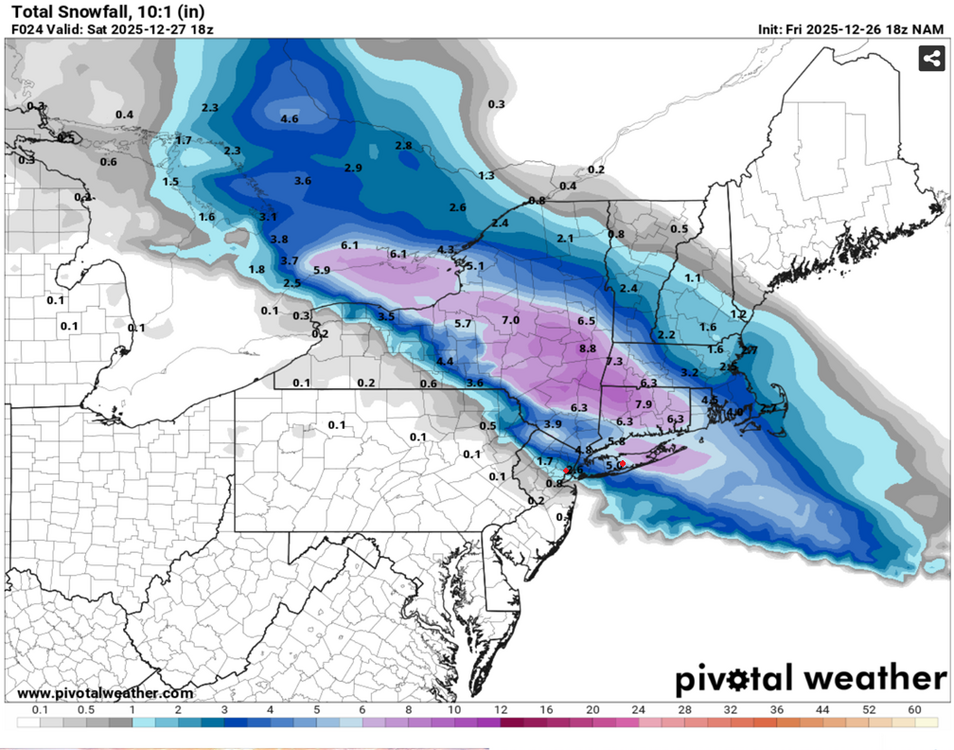All Activity
- Past hour
-

December 2025 regional war/obs/disco thread
VivaManchVegas replied to Torch Tiger's topic in New England
13 here. About 4 degrees lower than expected based on GYX forecast. -
I would think water content would be more meaningful than depth. Not that measuring air has no value.
-
We don't even need to go back that far to get a mean monthly temp of 25. That happened in February 2015, part of a 3-month period (January-March 2015) that was the coldest post-1980.
-
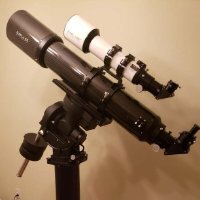
December 2025 regional war/obs/disco thread
AstronomyEnjoyer replied to Torch Tiger's topic in New England
Not sure. Looks like she hasn't been active since earlier this month. Hope she's doing well though. -
Lamar G III out again?
-
Every 6 hours was silly. The actual snowfall is what is on the ground (or measuring surface), rather than a theoretical depth not accounting for gravity or other physical properties. And I believe there is an average based on a differernt number of spots, so as to account for variations due to drifting, or is this just for larger snow falls?
-
yes but earlier on the 1st - will be interesting to see how this evolves and if the developing LP taps additional moisture from the ocean
-
Pretty chilly so far tonight, temp down to 12F already; how low are we going?
-
-
Yeah, I tried about 30 seconds of getting that bottom layer of frozen cement up and promptly decided to just shovel off all the loose snow/sleet and then I spent 5 minutes putting salt down, went and did a bunch of errands, and when I came back the cement was melted in spots making removal easy.
-

Wounded Duck Strikes Back: Dec 26 & 27th Winter Storm Obs
George001 replied to WxWatcher007's topic in New England
Yeah this month underperformed. The late north trends for this past storm were nice, but I only got 3 or so inches and it’s probably going to be gone unless Monday trends a lot colder. Oh well, the January pattern looks promising for a minor threat (4-8 ish if everything breaks right) around new years and a bigger storm on the 6th. -
They've issues some WSW that other offices would call blizzard warnings. Just like GRR with their advisory for a lake squall or 4-7" synoptic snow. I put little faith in the nws offices decision on what to issue
-

Wounded Duck Strikes Back: Dec 26 & 27th Winter Storm Obs
CoastalWx replied to WxWatcher007's topic in New England
6” for the month. Meh. Especially with this cold. -
Winter 2025-2026 Offers Return to Normalcy
SJonesWX replied to 40/70 Benchmark's topic in New England
B-? I respect your forecasts and you putting yourself out there, I really do. Had you not put in the 6-10” area you would have had an A for sure. But you owned up to that mistake which is admirable. I guess I’m not sure that I agree with your grading, but as I type this I’m not sure you were that far off with your grade. C+ maybe? -
Man, the Chargers got screwed on that contact call.
-
18z euro also shows this
-
The numbers from the 18z 12/26 NAM run on Pivotal (which doesn't add anything to the totals for sleet) were: Bridgeport: 5.8 Islip Airport: 5.0 Central Park: 2.8 Newark Airport: 0.8 However, the annotated totals shown for NWS reporting stations don't match the colored boundaries drawn on the map. I've marked Newark Airport and MacArthur Airport with red dots as an example. Based on the graphical boundaries and the legend, the estimated NAM totals are: Bridgeport: 5.5 Islip Airport: 5.5 Central Park: 2.8 Newark Airport: 1.8 So now I'm wondering how the values shown on Pivotal get populated. Is the data drawn from the exact lat lon of the reporting station cross referenced to the raw NAM data, or is there some kind of apprimation going on...?
-
Thanks, it’s other drivers who always worry me. MNDOT and the local agencies will do a fine job as always.
-

December 2025 regional war/obs/disco thread
Sey-Mour Snow replied to Torch Tiger's topic in New England
Where is your sidekick poster from last year?? -

December 2025 regional war/obs/disco thread
Sey-Mour Snow replied to Torch Tiger's topic in New England
What’s up with the influx of users I’ve never heard of ? -
Need better then
-
I'm not going to get my hopes up and believe in a Miller-anything until it shows up on the HRRR.
-
Saw that just now. On one hand I'm glad I won't be here but on the other hand I would like to see some snow whipped around at 65mph.
-
There could be a few tenths additional snow by end of month, and some might consider the first event (2.9") to be under-measured relative to long-times-past standards, so I have included all Decembers from 6.3" to 9.7" in this table of snowfall analogues ... I included 1869 because it was (regionally) a very cold December and it probably had plenty of snow (Dec 1868) just to make a note of it. Winter ____ OCT _NOV _DEC _JAN _FEB _MAR _APR ___ TOTAL ___ (Year) 1868-69 __ no data Oct-Dec _15.1 __ 9.6 __ 0.8 __ 0.0 _ _ 25.5+ ___ 1873-74 ___ 0.0 __ 2.0 __ 9.3 __ 6.6 _ 19.0 __ 0.3 __ 0.5 _ _ 37.7 ___ 1887-88 ___ 0.0 __ 0.2 __ 9.0 __11.1 __ 3.0 _ 22.2 __ 0.0 _ _ 45.5 ___ 1893-94 ___ 0.0 __ 0.0 __ 8.3 __ 9.4 _ 20.5 __ Tr __ 1.0 _ _ 39.2 ___ 1903-04 ___ Tr ___ 0.0 __ 6.4 __15.6 __ 5.0 __ 5.4 __ Tr _ _ 32.4 ___ 1909-10 ___ 0.0 __ 0.8 __ 9.0 __ 11.1 __ 5.0 __ 1.3 __ 0.0 _ _ 27.2 ___ 1911-12 ____0.0 __ 1.0 __ 8.5 __ 13.0 __ 2.5 __ 4.5 __ Tr __ _ 29.5 ___ 1915-16 ____0.0 __ Tr ___ 8.1 ___ 0.7 __13.1 _ 25.5 __ 3.3 _ _ 50.7 ___ 1916-17 ____0.0 __ Tr __ 14.5 __ 5.8 __ 12.2 _ 11.7 __ 6.5 _ _ 50.7 ___ 1919-20 ____0.0 __ Tr ___ 8.8 __ 8.2 _ 25.3 __ 5.3 __ Tr __ _ 47.6 ___ 1921-22 ____0.0 __ Tr ___ 7.3 __ 9.4 __ 7.2 __ 3.9 __ 0.0 _ _ 27.8 ___ 1922-23 ____0.0 __1.0 __ 8.0 __24.5 __18.8 __ 8.1 __ 0.0 _ _ 60.4 ___ 1932-33 ___ 0.0 __ 0.0 __ 9.4 ___ Tr __12.8 __ 4.8 __ Tr __ _ 27.0 ____ 1935-36 ___ 0.0 __ 2.7 __ 6.6 __12.1 __ 10.3 __ 1.5 __ Tr __ _ 33.2 ___ 1942-43 ___ 0.0 __ Tr ___ 8.5 __ 9.5 __ 4.4 __ 7.1 ___Tr __ _ 29.5 ___ 1944-45 ___ Tr ___ Tr ___ 6.7 __12.3 __ 8.1 __ Tr ___ 0.0 _ _ 27.1 ____ 1952-53 ___ 0.5 __ 1.7 __ 7.5 ___ 4.1 __ 0.4 __ 0.9 ___ Tr __ _ 15.1 ___ 1957-58 ___ 0.0 __ Tr ___ 8.7 __ 9.2 __10.7 _ 15.9 __ 0.2 __ _ 44.7 ___ 1961-62 ___ 0.0 __ Tr ___ 7.7 __ 0.6 __ 9.6 __ 0.2 __ Tr __ _ 18.1 ____ 1966-67 ___ 0.0 __ 0.0 __ 9.1 __ 1.4 __23.6 __17.4 __ Tr __ _ 51.5 ___ 1968-69 ___ 0.0 __ Tr ___ 7.0 __ 1.0 __ 16.6 __ 5.6 __ 0.0 _ _ 30.2 ___ 1969-70 ___ 0.0 __ Tr ___ 6.8 __ 8.4 __ 6.4 __ 4.0 __ Tr __ _ 25.6 ___ 1990-91 ___ 0.0 __ 0.0 __ 7.2 __ 8.4 __ 9.1 __ 0.2 __ 0.0 _ _ 24.9 ___ 1993-94 ___ 0.0 __ Tr ___ 6.9 __12.0 _ 26.4 _ 8.1 __ 0.0 _ _ 53.4 ___ 2005-06 ___ 0.0 __ Tr ___ 9.7 __ 2.0 _ 26.9 __ 1.3 __ 0.1 _ _ 40.0 ___ 2013-14 ___ 0.0 __ Tr ___ 8.6 __19.7 _ 29.0 __ 0.1 __ Tr __ _ 57.4 ___ 2017-18 ___ 0.0 __ Tr ___ 7.7 __ 11.2 __ 4.9 __11.6 __ 5.5 _ _ 40.9 ___ ==================== Quite a few very cold Januaries in this group, and good snowfall winters like 1887-88, 1922-23, 1966-67, 2013-14, 2017-18.
-

Wounded Duck Strikes Back: Dec 26 & 27th Winter Storm Obs
rgwp96 replied to WxWatcher007's topic in New England
I ended up with 3.8. Can’t complain I’ve have 11.4 for December but every storm I’ve had has been under in the forecasted amounts lol.




